As we get older, getting a good night’s sleep can feel like an elusive dream. Changes in sleep patterns and issues like arthritis, back pain, and sleep apnea can turn what should be restful nights into restless ones. But did you know that the right mattress can make all the difference?
It's not just about getting sleep; it’s about getting quality sleep that supports your health and well-being. Let’s dive into how the right mattress can help you achieve just that, providing comfort, support, and the restful nights you deserve, no matter your age!
Support for Health Issues
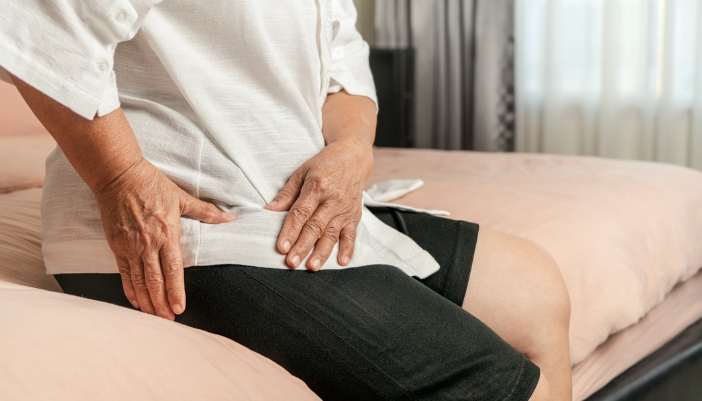
Waking up with aches and pains is just a part of getting older, right? Not quite! The proper mattress support can make a world of difference!
- Arthritis: Joint pain from arthritis can make sleep difficult. A medium-firm to firm mattress with memory foam or latex can provide pressure relief on joints and alleviate pain.
- Back Pain: Back pain is common among seniors and can be mitigated with a mattress that offers good spinal alignment. Look for mattresses with zoned support that can reinforce the lumbar region to maintain proper spinal alignment and reduce lower back pain.
- Hip Pain: For those suffering from hip pain, a mattress with a soft to medium-firm feel and good pressure relief is crucial. Zoned support and memory foam can help cushion the hips and reduce pressure points, making sleep more comfortable.
- Hot Sleeper: Feeling too hot as you sleep becomes more challenging as you age, so it’s vital to look for a mattress with cooling features like gel-infused foam, breathable comfort layers, or latex mattresses.
- Pressure Relief: Opt for mattresses that offer good pressure relief to minimize stress on joints. Memory foam and latex mattresses are great choices because they contour to the body, providing support where it’s needed most.
Pro Tip:
For other health issues like snoring and poor circulation, an adjustable bed helps alleviate these issues (we’ll expand more on that later!).
Ease of Access
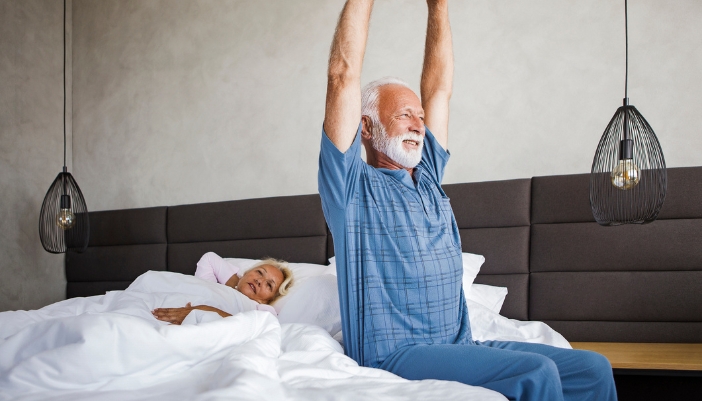
For older adults, the ease of getting in and out of bed is a crucial factor in choosing the right mattress. A mattress that's too high or too low can pose challenges and increase the risk of falls. Here's how to ensure your mattress is accessible and easy to manage:
- Optimal Mattress Height: According to the Americans with Disabilities Act (ADA), the optimal bed height for most adults is between 20 to 23 inches from the floor to the top of the mattress. This height allows easy access and minimizes strain when getting in and out of bed.
- Edge Support: Look for a mattress with strong edge support, which helps maintain its shape and provides a stable edge to sit on when getting in and out of bed.
Pro Tip:
A mattress with strong edge support usually involves reinforced coils, high-density foam, a stable perimeter, and minimal compression when sitting on the edge!
Adjustable Beds
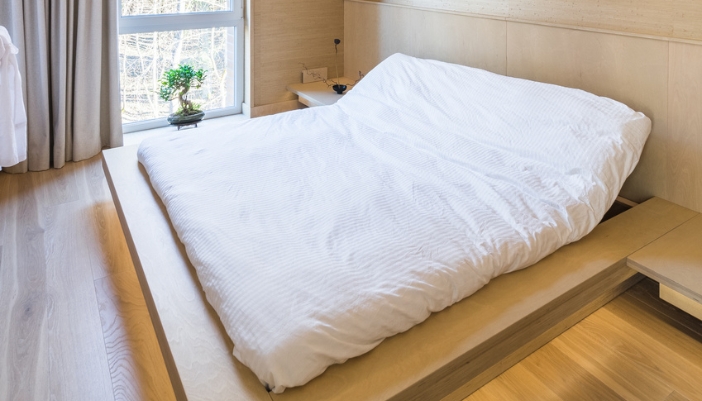
You might not think it, but adjustable beds are a game-changer for seniors. The ability to adjust the foot and head of the bed does wonders for your comfort level and specific health issues like these!
- Improved Circulation: Elevating the head or feet can boost blood flow, reduce swelling, and improve overall circulation, which is particularly beneficial for those with circulatory issues.
- Reduced Snoring: Raising the head of the bed helps open airways, reduces snoring, and improves breathing during sleep.
- Ease of Access: Adjustable beds make getting in and out of bed easier, which is especially helpful for those with limited mobility or balance issues.
- Acid Reflux: Elevating the upper body can prevent stomach acid from rising into the esophagus, reducing symptoms of acid reflux and GERD.
- Sleep Apnea: Adjusting the bed to elevate the head can help keep airways open, reducing the severity of sleep apnea symptoms.
- Arthritis: Customizable positioning can relieve pressure on joints and reduce pain, making it easier to find a comfortable sleeping position
Pro Tip:
Some adjustable beds come with extra features like massage functions to alleviate pain, zero gravity position to improve circulation, programmable memory settings, and under-bed lighting to help navigate around your bed!
Mattress Materials and Their Benefits
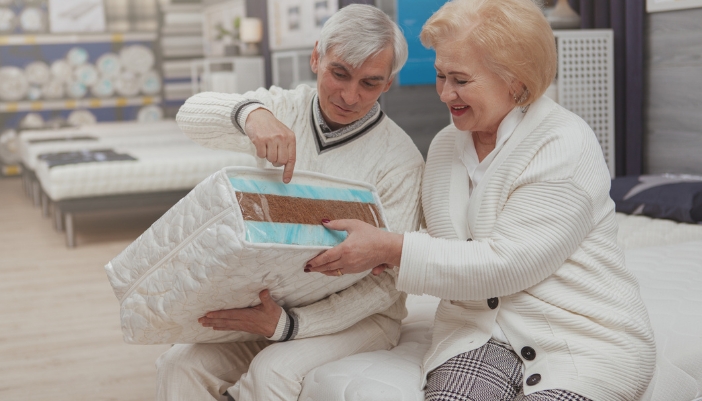
What your mattress is made of says a lot about how it can affect your sleep — you just need to learn the language! Each can cater to specific needs, which is even more vital for seniors.
- Memory Foam is made from viscoelastic foam that contours to your body, providing excellent pressure relief, motion isolation, and spinal alignment. It is perfect for easing joint pain and pressure points, though it can retain heat and sometimes feel too cushy.
- Latex, made of natural or synthetic rubber, offers great pressure relief and support. It’s also naturally hypoallergenic and cooler than memory foam, which is ideal for hot sleepers and those with intense allergies (but be careful of latex sensitivities!).
- Innerspring features a network of coils for support, often with added foam layers for comfort, which provides good airflow and strong edge support, making it easier to get in and out of bed. However, the springs can be noisy (unless you opt for a pocketed coil mattress!).
- Hybrid combines innerspring coils with foam or latex layers to balance support and pressure relief, offering better temperature regulation and edge support.
Pro Tip:
If you need extra comfort, consider a mattress topper and pillows with similar materials so you have continuous support!
Testing, Testing
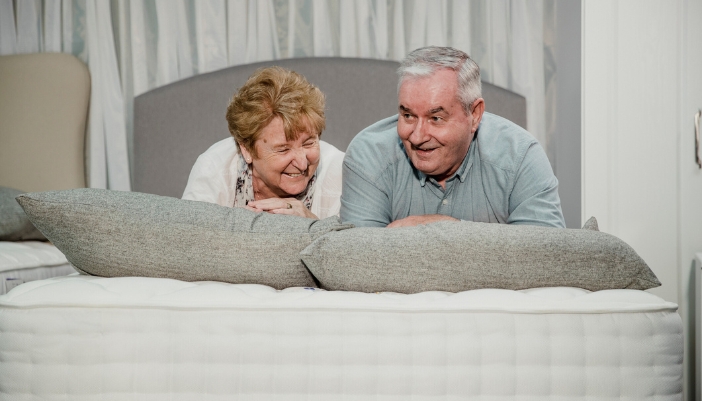
Researching what goes into the best mattress for your sleep is just one part; testing is the other! And since knowing what feels right to you is vital, so is testing out each mattress yourself. So, as you go through the store (we hope at Van Dyke Appliance *wink wink*), here’s what you should keep in mind:
- Spend at least 15 minutes on each mattress in your preferred sleep position.
- Check to see if you feel supported and that your spine is aligned, no matter your position.
- If you need to adjust your position or cross your legs to get comfortable, that mattress isn’t for you!
- Check reviews and pay extra attention to ones that mention arthritis relief, back support, and ease of movement!
As you can see, finding the best mattress for older adults is a challenge, but it is worth taking! And if you have any questions, don’t hesitate to give us a call or stop by — our sleep experts can help you find the best fit based on your needs!